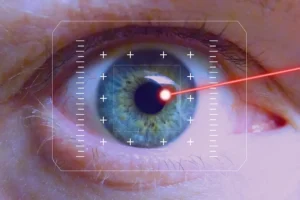Stages of Alcoholism
- Updated on: Nov 29, 2024
- 5 min Read
- Published on Aug 20, 2019


What do you Mean by Alcoholism?
Alcoholism is the most severe form of alcohol abuse and involves the inability to control drinking habits. It is also called as alcohol use disorder. Alcohol use disorder can be divided into three categories – mild, moderate and severe. Each category has different symptoms and can cause harmful side effects. If left untreated, any type of alcohol abuse can get out of control.
People struggling with alcoholism often feel as though they cannot function normally without taking alcohol. This results in a wide range of issues and affects professional goals, personal matters, relationships, and overall health. With time, the serious side effects of continuous alcohol abuse can worsen and produce serious complications. There is no need to suffer from alcohol addiction in silence. There are many treatment options available for overcoming alcohol abuse and achieve long-term sobriety.
Warning Signs of Alcoholism
Sometimes, the warning signs of alcohol abuse are quite evident. Other times, they can take longer to be visible. When alcohol addiction is diagnosed in its early stages, the chances for a successful recovery increase considerably. Some common signs of alcoholism include:
- Being unable to control alcohol consumption
- Craving alcohol when not drinking
- Putting alcohol above personal responsibilities
- Feeling the need to keep drinking more
- Spending a substantial amount of money on alcohol
- Behaving differently after drinking
Consequences of Alcoholism
There are many serious consequences of alcoholism like liver damage, cancer, depression etc. It is important to determine whether a person suffers from alcohol use disorder as early as possible, as it will be easier to stop psychological and physical damage occurring in the first place. Unless measures to stop drinking are taken and involvement into one’s habits takes place, various stages of alcoholism can progress into negative health conditions and chronic illnesses, some of which include:
- Anemia
- Cardiovascular diseases
- Liver Cirrhosis
- Cancer
- Depression
- Nerve damage
- Gout
- Pancreatitis
Stages of Alcoholism
Moderate drinking is not a cause for concern in most adults. But chronic alcohol abuse may lead a person on a dangerous path towards addiction. The National Institute on Alcohol Abuse and Alcoholism has estimated that 17 million American adults suffer from alcohol use disorders. And 855,000 Americans aged between 12 to 17 years have alcohol use disorders. It is very important to remember that alcoholism is not created overnight, however it occurs due to chronic alcohol abuse.
Following are different stages of alcoholism or alcohol use disorder (AUD):
Stage 1: Occasional Abuse and Binge Drinking
The first stage of alcoholism is usually a general experimentation with alcohol. These drinkers are mostly new to different forms of alcohol and want to test their limits. This experimental stage is commonly found in young adults. Commonly, experimental drinkers engage in binge drinking. While these drinkers do not drink regularly, they consume exceptionally large quantities of alcohol at one time. Binge drinking has been characterized as:
- For men, 5 or more alcoholic beverages within 2 hours
- For women, 4 or more alcoholic beverages within 2 hours
Most of the binge drinkers exceed this amount. This is especially true for teens who attend parties where drinking is the most common activity. Most people think that binge drinking is safe, however this is not true. Drinking large quantities of alcohol at one time is dangerous, and can even lead to coma or death. Furthermore, people may become dependent on the feeling they get from drinking and find that these episodes increase in frequency.
Stage 2: Increased drinking
Drinkers leave the experimental stage when they intake alcohol more frequently. Instead of just drinking occasionally at parties, they may start drinking every weekend. Increased alcohol consumption can also lead to drinking for following reasons:
- As an excuse to enjoy with friends
- To relieve stress
- To avoid boredom
- To overcome sadness or loneliness
Regular alcohol intake is different from moderate drinking and there is usually a higher emotional attachment to it. A moderate drinker might pair a glass of wine with a meal, while a regular drinker uses alcohol for pleasure in general. As increased drinking continues, people become more dependent on alcohol and are at risk of developing alcoholism.
Stage 3: Problem Drinking
Frequent, uncontrolled alcohol intake eventually leads to problem drinking. While any form of alcohol abuse is problematic, the term “problem drinker” refers to someone who starts experiencing the effects of his habit. A person at this stage of alcoholism starts becoming more depressed, more anxious, or starts losing sleep. Although, he may start to feel sick from heavy drinking, he enjoys its effects too much to care. Many drinkers at this stage are more likely to drink and drive or experience legal problems as a result of their drinking habits. There are some specific social changes related to problem drinking. These include:
- Relationship issues
- Decreased social activity because of erratic behavior
- Sudden change in friends
- Difficulty conversing with strangers
Stage 4: Alcohol Dependence
Alcoholism has two main side effects: dependence and addiction. It is possible for a person to be dependent on alcohol, but not yet addicted. Dependence occurs after the problem drinking stage. At this point, people have an attachment to alcohol that has taken over their regular routine. They’re aware of the adverse effects, but no longer have control over their alcohol consumption.
Alcohol dependence also means that a person has developed a tolerance to drinking. As a result, he may have to drink larger quantities to get “buzzed” or drunk. Increased alcohol intake has more damaging effects on the body. Another characteristic of dependence is withdrawal, when people sober up, they may feel undesirable symptoms such as:
- Nausea unrelated to a hangover
- Body tremors
- Sweating
- Severe irritability
- A racing heart
- Trouble sleeping
Stage 5: Addiction and Alcoholism
The last and final stage of alcoholism is addiction. At this stage, people no longer want to drink just for pleasure but for them drinking has become a physical and psychological need to drink.
But addiction doesn’t just end with alcoholism. Oftentimes, if someone is abusing alcohol, it usually leads to them also eventually abusing other harmful substances. Now, anyone who goes down this rabbit hole of using unhealthy coping mechanisms will eventually deal with even more coping mechanisms. For example, if you’re a doctor or nurse (or any stressful job), you might want to “take off the edge” from how busy and unpredictable your job makes your life be.
But this idea of “taking off the edge” could lead to it getting worse, more often, and needing something bigger to help you cope. Yes, a lot of people a lot of professionals, sadly deal with this, and there’s this idea that escapism can help them deal with their stressful jobs. But there are so many resources out there to help you get out of this, such as drug rehab for nurses, programs, courses, mental health services, and so much more. You don’t have to feel alone in this.
People with alcohol addiction physically crave for drinking and are often inconsolable until they start drinking again. Besides, they may be addicted to other drugs as well. Compulsive behaviors are well-known in addiction, and people with alcohol addiction often drink whenever and wherever they want.












